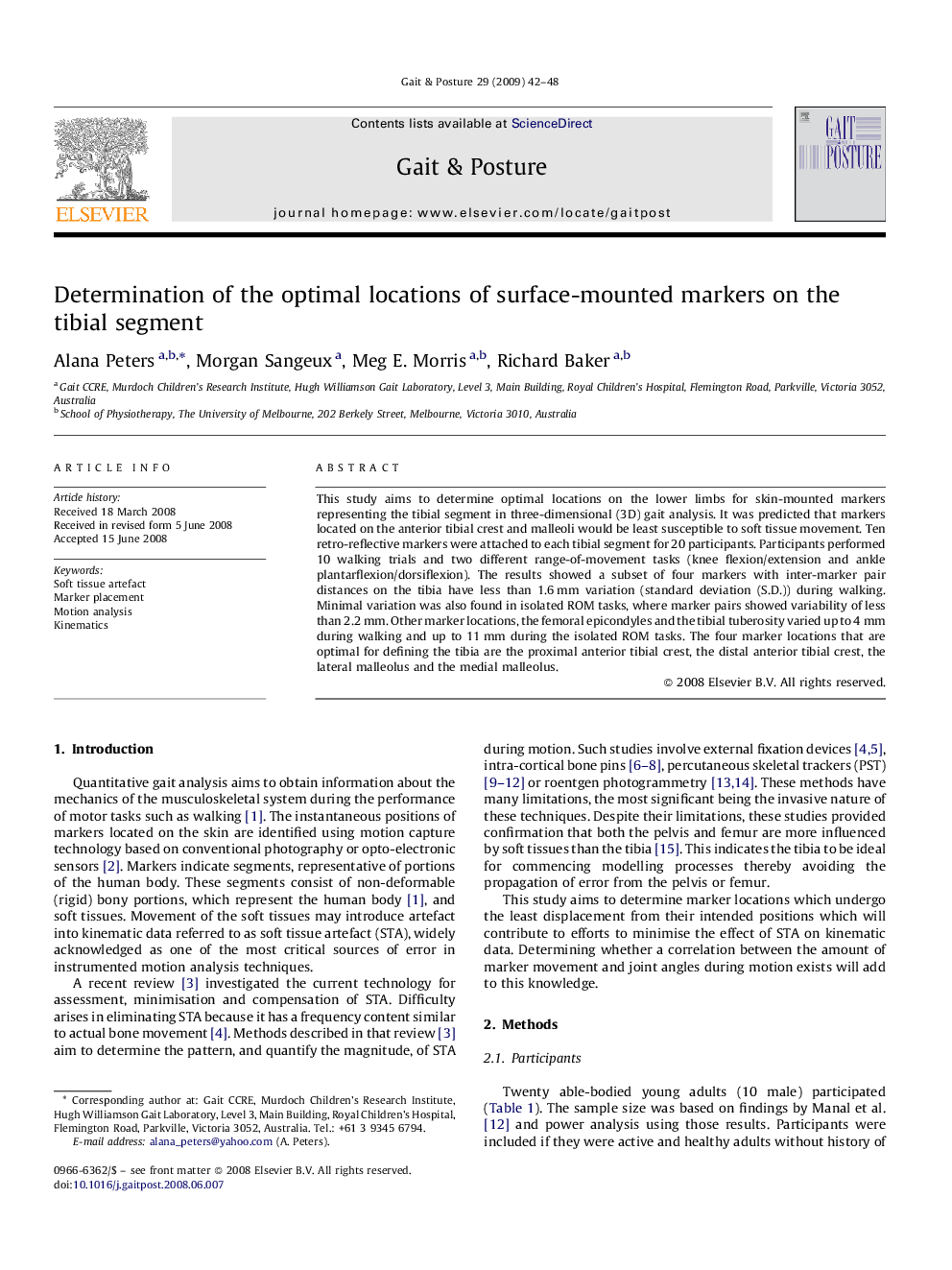| Article ID | Journal | Published Year | Pages | File Type |
|---|---|---|---|---|
| 4057952 | Gait & Posture | 2009 | 7 Pages |
This study aims to determine optimal locations on the lower limbs for skin-mounted markers representing the tibial segment in three-dimensional (3D) gait analysis. It was predicted that markers located on the anterior tibial crest and malleoli would be least susceptible to soft tissue movement. Ten retro-reflective markers were attached to each tibial segment for 20 participants. Participants performed 10 walking trials and two different range-of-movement tasks (knee flexion/extension and ankle plantarflexion/dorsiflexion). The results showed a subset of four markers with inter-marker pair distances on the tibia have less than 1.6 mm variation (standard deviation (S.D.)) during walking. Minimal variation was also found in isolated ROM tasks, where marker pairs showed variability of less than 2.2 mm. Other marker locations, the femoral epicondyles and the tibial tuberosity varied up to 4 mm during walking and up to 11 mm during the isolated ROM tasks. The four marker locations that are optimal for defining the tibia are the proximal anterior tibial crest, the distal anterior tibial crest, the lateral malleolus and the medial malleolus.
